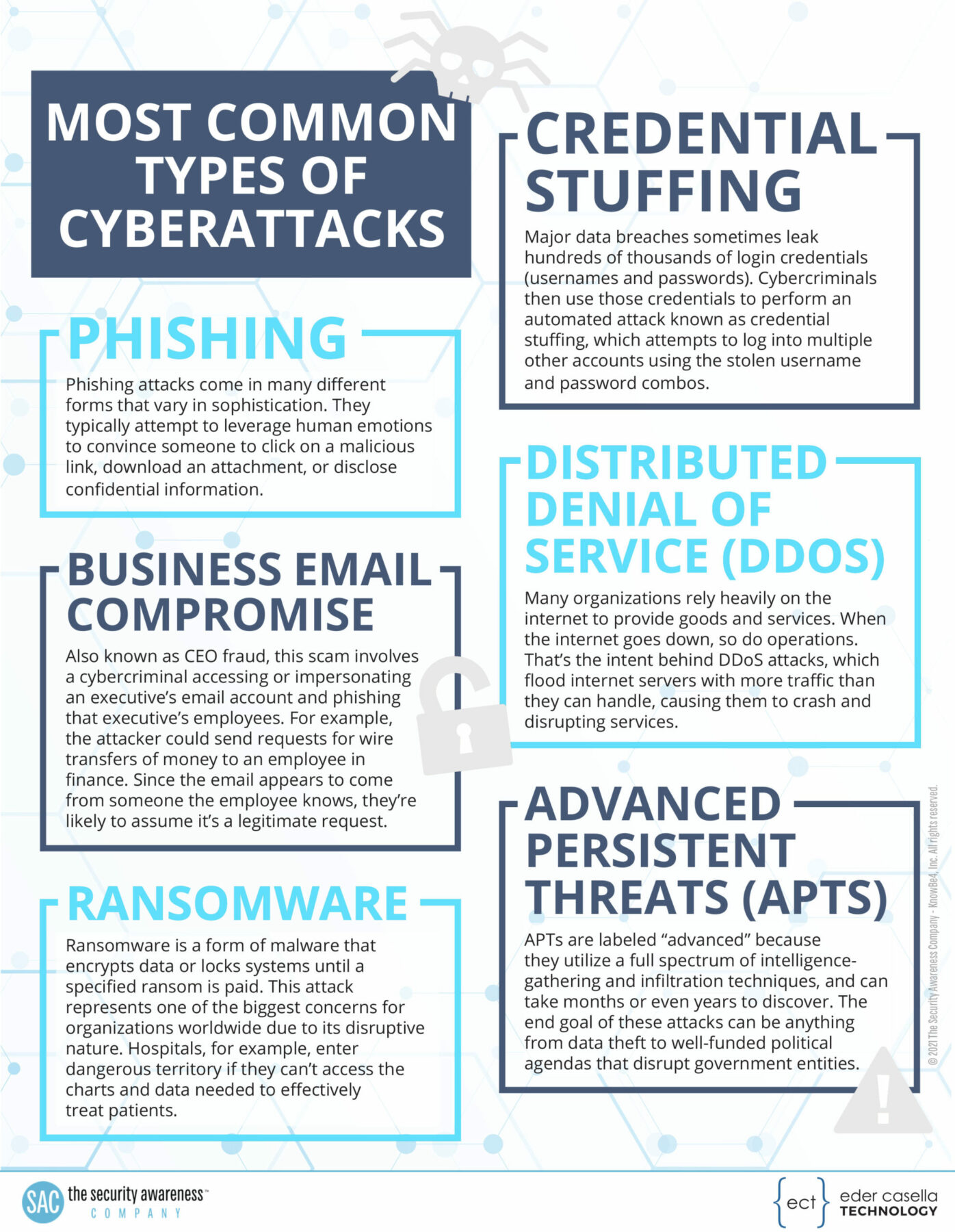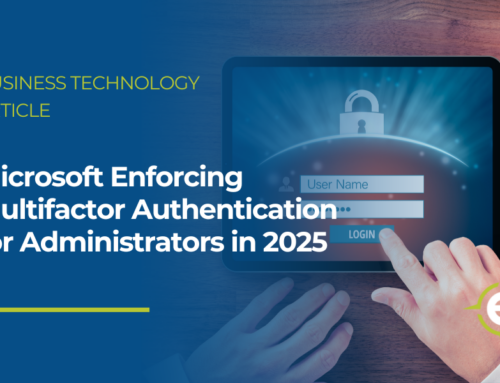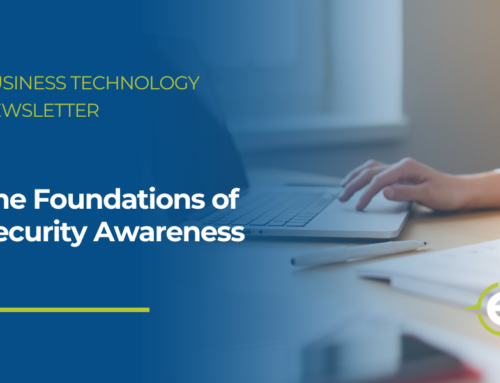Most Common Types of Cyberattacks
We are continuing the conversation on cyberattacks. Most people assume that cyberattacks are caused by clicking on a malicious link that allows the attacker to access your information. While this is a method used, there are many other sophisticated ways that cybercriminals can attack your systems. Let’s review the six most common types of cyberattacks to ensure that you do not fall victim to cybercriminals.

Phishing
Phishing attacks come in many different forms that vary in sophistication. They typically attempt to leverage human emotions to convince someone to click on a malicious link, download an attachment, or disclose confidential information.
Credential Stuffing
Major data breaches sometimes leak hundreds of thousands of login credentials (usernames and passwords). Cybercriminals then use those credentials to perform an automated attack known as credential stuffing, which attempts to log into multiple other accounts using the stolen username and password combos.
Business Email Compromise
Also known as CEO fraud, this scam involves a cybercriminal accessing or impersonating an executive’s email account and phishing that executive’s employees. For example, the attacker could send requests for wire transfers of money to an employee in finance. Since the email appears to come from someone the employee knows, they’re likely to assume it’s a legitimate request.
Distributed Denial of Service (DDoS)
Many organizations rely heavily on the internet to provide goods and services. When the internet goes down, so do operations. That’s the intent behind DDoS attacks, which flood internet servers with more traffic than they can handle, causing them to crash and disrupting services.
Ransomware
Ransomware is a form of malware that encrypts data or locks systems until a specified ransom is paid. This attack represents one of the biggest concerns for organizations worldwide due to its disruptive nature. Hospitals, for example, enter dangerous territory if they can’t access the charts and data needed to effectively treat patients.
Advanced Persistent Threats (APTS)
APTs are labeled “advanced” because they utilize a full spectrum of intelligence gathering and infiltration techniques, and can take months or even years to discover. The end goal of these attacks can be anything from data theft to well-funded political agendas that disrupt government entities.
Have questions? We are here to help!








